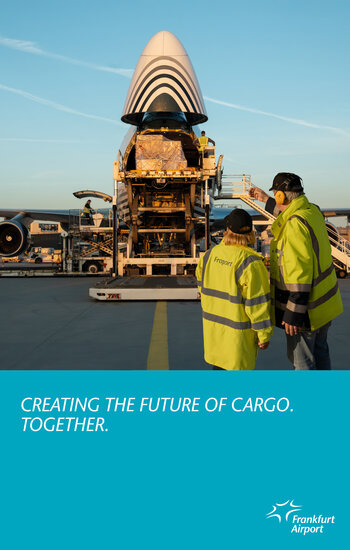01JAN26 marks the official industry deadline when IATA’s ONE Record is due to become the preferred standard for digital data exchange in air cargo. Last month, CargoForwarder Global published an article on the subject (See: https://cargoforwarder.eu/2025/08/03/one-record-communication-is-a-24-way-street/ ) and subsequently opened the floor to guest authors to share their views on the topic. Radhesh Menon, Head of Product Management and Strategy, Air Cargo at IBS Software, answered the call and has written the following piece for CFG:

ONE Record and the last mile: Building momentum for 2026
Deadlines in aviation are not symbolic. Aircraft depart on schedule, safety checks follow precise sequences, and cargo cut-offs are immovable. Which is why the upcoming January 2026 milestone for ONE Record adoption is so pivotal. It is not just a date; it is an inflection point for the industry.
When IATA launched ONE Record, the vision was bold: a single source of truth for shipment data, underpinned by APIs and linked data. Decades of inefficiency caused by siloed systems, redundant messaging, and patchwork integrations could finally be cleared away. Importantly, the technical foundation is already in place. The standards are defined, the reference servers are available, and numerous proof-of-concepts have shown that the model works in practice.
Encouragingly, airlines representing 72 percent of global air waybill (AWB) volumes are already on track, according to IATA. This demonstrates strong momentum and confirms that the standard is technically viable at scale. The opportunity now is to extend this readiness across the broader ecosystem, so that forwarders, handlers, and regional carriers can realize the same benefits and ensure industry-wide transformation.
ONE Record is not another incremental standard shift, like the move from Cargo-IMP to XML. It is a reset. It is the backbone of what IATA itself calls the “Internet of Logistics” – a web of interoperable systems where real-time data flows securely and seamlessly. If we fall short now, the cost will not just be measured in missed deadlines but in missed relevance.
Beyond proof of concept
At IBS, we approached ONE Record differently from typical pilots. Most industry POCs demonstrate a single use case in isolation. Our collaborations, for example with Singapore Airlines and Cargo Community Network, and later with SATS and dnata, tested ONE Record in a multi-party environment, the true measure of its value. Multiple stakeholders exchanged data against a common record, eliminating duplication and manual reconciliation while integrating seamlessly with existing business processes.
Through these projects, we implemented nearly all of IATA’s prescribed APIs for shipment records, tackling one of the most complex use cases. The result was not only a working model but also a scalable one. After establishing the initial integration, we could add new partners quickly and at a fraction of the original effort. We are now extending similar POCs with Qantas, further validating that adoption is achievable across different contexts.
This matters because adoption should not mean tearing down established workflows. ONE Record enables a smooth transition – plug into the standard, and partners interoperate without wholesale redesign. That reduces the turbulence of change management and makes adoption more scalable.
The myth of complexity
Smaller stakeholders often argue that adoption is too complex, too costly, or too dependent on others moving first. These arguments sound reasonable, but they misunderstand the design of ONE Record.
The model is deliberately open, modular, and API-first. It supports step-by-step integration, beginning with something as simple as a single record type.
ONE Record is not about multiplying APIs to unmanageable levels. It is about creating a standard structure where any partner can connect once and interoperate with many. Whether you are a regional forwarder or a global carrier, the principle is the same – build to the standard, and the ecosystem becomes plug-and-play.
And if anyone doubts the feasibility, consider what happened at the IATA ONE Record Hackathon in Dublin. Competitors Cargolux, Air France KLM Martinair Cargo, and Lufthansa Cargo joined forces with IBS Software and Fraunhofer IML. In just 28 hours, we built two working solutions on top of the open-source ONE Record server. OneBooking.ULD streamlined quotations and ULD (Unit Load Device) bookings using AI and natural language processing. ne:one simulate gave non-technical users a way to test and validate implementations across the shipment lifecycle. These were not proofs of concept left on a whiteboard. They were working tools, developed by rivals collaborating in real time, to advance the entire industry. If direct competitors can align to build the future, what excuse remains for others to stall?
From pilots to production
The real value of ONE Record comes when adoption is broad. Implementing it in pockets or silos will not realize the network effects. Proof-of-concepts should not be endpoints; they are runways to adoption. Only when a critical mass of forwarders, handlers, and carriers embrace the standard will the benefits of speed, visibility, compliance, and competitiveness flow at scale.
This is why waiting on the margins is risky. ONE Record is designed for a connected ecosystem, not isolated implementations. The benefits are exponential when the majority of transactions run on a common standard. Without that collective shift, the network effects cannot fully materialize, and late adopters will find themselves struggling to catch up.
The last mile to 2026
As the new year approaches, the industry has a choice. Treat the deadline as optional and risk diluting momentum. Or recognize that the standards, technology, and proof points are ready, and that what remains is a collective commitment to act. ONE Record is not just another technical upgrade. It is a once-in-a-generation opportunity to move from document-driven processes to a truly data-centric ecosystem. For those still waiting on the sidelines, the time to move is now, not after competitors have already proven the advantage.
This article was contributed by Radhesh Menon, Head of Product Management and Strategy, Air Cargo at IBS Software




